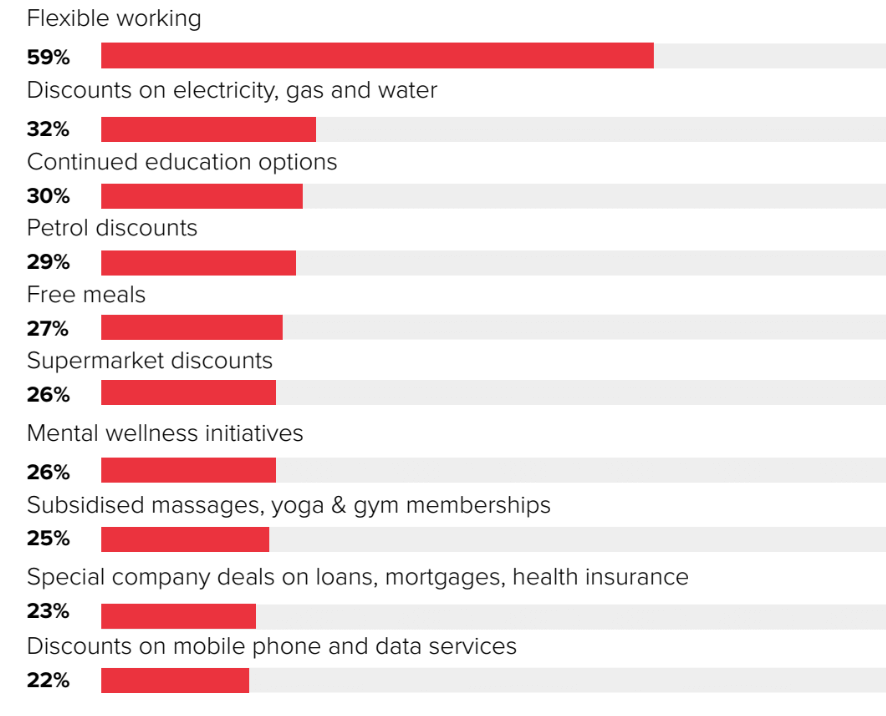
Creating a highly-engaged workforce and a thriving workplace continues to be a major focus for all HR managers. And the reason is simple. Every business needs what employee engagement creates: Happier and more productive employees.
Moving into 2024, employee engagement is more important than ever. So, whether you work in an ambitious tech company, a growth-minded healthcare organisation, a fast-paced hospitality business, or somewhere else entirely, putting employees first needs to be your priority.
If you’re serious about putting employees first, here are six employee engagement trends you need to put into practice and master this year.
Trend #1. Employee experience
It’s all about placing a high value on your employees and ensuring they are happy. Rather than simply focusing on how you’re doing through the results of your employee engagement surveys, turn your attention to proactively developing the employee experience to produce better employee engagement from the get-go.
Employee experience is everything an employee experiences about your company. The journey begins even before they apply for a job, and it continues long after the employee leaves the business. It also includes the physical environment where your people work and your company’s culture.
By focusing on the employee experience, you can actively set employees up for success with the right tech tools, influence your company culture, and craft workplace policies that resonate with today’s workers.
So, while employee engagement and your employees’ commitment to your company and their jobs is the end goal, employee experience delivers the means to get there in the most direct way. And just as customer experience professionals optimise customer journeys for better customer engagement, your role as an HR manager is to create an optimal employee experience. And with it, happier and more productive employers, higher retention rates, and lower turnover follow suit.
Key takeaway: The employee experience has the potential to become a major competitive advantage for companies in high-tech sectors where the war for talent rages on or for those in industries such as healthcare or aged care services which require specialised skills but don’t offer overly attractive compensation.
Offering a superior employee experience can help you attract and retain the best talent. Just as optimising the customer journey leads to satisfied customers, a great employee experience produces satisfied employees.
The Ultimate Employee Engagement Guide
Trend #2. Employee career pathing
It’s no secret that millennials and Gen Z crave opportunities to learn and grow. It’s one major factor that sets them apart from other generations. According to Gallup analytics, millennials and Gen Z rank opportunities to learn and grow in a job above everything else.
Millennial and Gen Z workers, in particular, won’t stick around if they don’t have a sense that they can grow in your business. So, rather than tackling high millennial turnover as a fact of life, put your employees’ career development aspirations first.
The art of keeping millennials and Gen Z engaged at work is letting them know what opportunities exist within the company. Invest in employee career development and build on the opportunities you provide to your employees to learn and grow. This is your chance as the HR manager to make sure you (and your people managers) have developed career goals and pathways for each of your employees to support them through their employee journey and career advancement.
Talk to your people about their aspirations, goals, and ambitions to further boost employee engagement. Find out what your people want to become and then figure out how to align their personal passions with the business objectives.
Key take away: The goal of making career development opportunities a part of your company culture is to allow employees to see for themselves where they can go in their careers with your company. Setting up continuous cycles of promotion and keeping your people in the loop about internal opportunities could keep them from seeking opportunities elsewhere.
Trend #3. Flexible working
From increased workforce engagement to better performance, and company loyalty, the benefits of flexible working are now very well established. And from what we can see from COVID, flexible and remote working will become the new norm for many New Zealand businesses.
Take a look at the results from our recent blog on Employee Benefits Every Company Should Provide. As you can see, flexible work ranked the highest for employee benefits. So, if you still aren’t allowing your employees to have some say over how, where, or when they work, consider it a priority in 2024.

Whether this involves working from home, job sharing, part-time hours or something else entirely, it’s important that both you as the employer and your employee agree on the arrangements. Flexible working is only effective if it works for all parties. In addition, with more of a focus on wellbeing this year, offering a healthy work-life balance is more important than ever.
Key takeaway: Embedding a culture of flexibility by offering flexible working allows you to attract, retain, and develop the best possible talent and ensure a positive work-life balance for employees. It’s also important to bear in mind that employees often value flexibility over other more traditional forms of compensation like pay rises.
Trend #4. Recognition
Receiving praise and recognition from managers has always been a strong motivator, it’s also the backbone of employee engagement. By embracing different ways to recognise employee performance, you not only motivate individuals but help increase productivity and quality output from the entire team.
Most employees prefer real-time feedback over annual performance reviews simply because real-time feedback allows meaningful actions to be taken when it matters most. A culture of continuous feedback also leads to more transparent performance expectations.
Key takeaway: Don’t wait for an annual review to focus on areas for improvement or opportunities for development. Start to make use of social recognition platforms and provide an appropriate platform for your employees to reward and recognise each other’s contributions.
Trend #5. Make learning more accessible
Small businesses have no excuses for avoiding their obligation to continually train and develop staff. There’s also no excuse for making your teams sit through boringly irrelevant PowerPoint presentations.
eLearning platforms make it simple and affordable to give staff more choice over what, where and when they learn. UDemy is just one example. Staff can log in and complete a snack-sized course in just a few hours on any mobile device – from powerful public speaking to mobile UX design. It’s a great way to motivate people to take responsibility for their own professional development – and you get the feedback on how they’re progressing.
Trend #6. Company Culture
Big enterprises are now looking to entrepreneurial start-ups for cues on how to innovate. Agility is the name of the game – if you remove the fear of failure (within reasonable parameters for performance) you can give people a chance to run with their ideas or challenge the status quo.
Your most talented staff want to be inspired. They want to feel the passion behind your company’s core purpose. If they don’t feel excited, they’ll probably leave you soon for a more agile business – or start one of their own. We also looked into the neuroscientific approach to making sure your workforce is full of engaged employees.
Put your people first with the right HR tech tools
It’s important to remember the relationship between HR and employee engagement. Ensuring your employees have the technology and the tools they need to be efficient and productive is an important baseline in employee engagement. It’s an investment in your people and the business.
From an HR perspective, it’s also essential that you deploy the right HR tools and technology to reduce the amount of HR admin tasks that you and your employees need to handle.
Want more?
Equipping employees with self-service tools and apps that streamline traditionally time-consuming tasks like onboarding, requesting paid time off, doing performance reviews, or making routine HR updates, like a change of address, deliver big wins.
You shouldn’t stop there, though. To learn more about what makes your team tick and perform better, explore our Wellness at work 2022 reports and learn how to best support your people.
 News alert: new professional services from Employment Hero! Now Kiwi businesses can choose Managed Payroll to get payroll done by the pros. Read more
News alert: new professional services from Employment Hero! Now Kiwi businesses can choose Managed Payroll to get payroll done by the pros. Read more 


